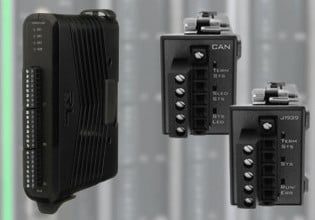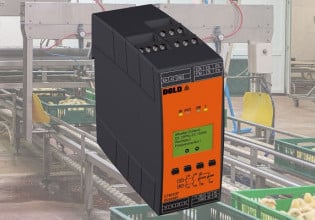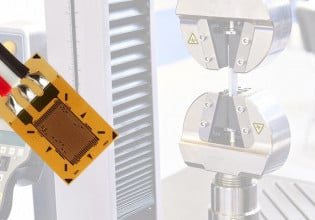Methods of Marking and Labeling for Wiring and Tubing
Labels are such a small detail in the world of robotics and automation, they are often given very little attention. However, they play a vital role in proper system function - from installation to troubleshooting.
Why Do We Label Wires and Tubes?
Labels are often given very little attention in the robotic and automation world. However, they play a vital role in several stages of a system’s progression. They can be used for troubleshooting and reconfiguration in the initial stages of a systems commission. After commissioning, they are absolutely necessary for any maintenance or troubleshooting over the life of the system. Finally, they are necessary for properly decommissioning any system.

Figure 1. Labeling the wires in a control cabinet is necessary for proper system maintenance. Photo by George Slabov on Unsplash
When a system is used for a period of time, there will inevitably be a loose connection or misplaced wire that needs to be found and addressed. Wire labels are used to match the wiring diagram to the wires in the actual system. Each label corresponds to a labeled line or connection point in the electrical drawing. Pneumatic and hydraulic hoses on a system often follow a similar pattern with their own corresponding diagrams and labels. This allows for simplified troubleshooting and easier modifications down the road.
Sometimes when troubleshooting, it is unknown whether the wire was landed incorrectly or the final destination device is the cause of the problem. A wire label will help to dispel the unknown factor by creating useful points for testing signals - even far away from the final device. Labels are useful for working safely in a cabinet. When the power is de-energized to the cabinet, it is important to check that power has actually been turned off. Without labels, it would take some time, and add layers of danger, to decipher where power should and shouldn’t be.
The Different Types of Labels
There are many different types of labels currently on the market, and they all have their pros and cons. Some are easy to apply initially but are difficult to change down the road. Others are shrink-wrapped and create a secure fit but require the wire to be unterminated in order to be applied. Others are designed to be installed into a pre-existing system without removing wires in the process. In the end, preference is usually determined by the company installing the wires.
There are three main types of labels commonly used in the industry:
- Heat Shrink
- Self Laminating
- Tags
Each label has its own specific benefits. They all require a printer in order to create individual labels. These printers can often handle different size labels depending on application.
Heat Shrink
Heat shrink wire labels are best installed when the system is being built. They provide a strong permanent solution to wire labeling that is resistant to harsh environments. Since they slide over the wire with only a slight amount of clearance, the wire cannot be terminated with ferrules or other crimp terminals before application.
A printer is used to print the label which is then slid over the end of the wire. When heat is applied to the label, it shrinks around the wire to create a snug 360 degree fit. Be careful when using the high heat setting of a hot-air gun, wire insulation, and plastic components can be quite sensitive.
Self Laminating
Self laminating tags can be applied to wires that have already been terminated. They consist of a white label with a clear tail. A printer is used to mark the white section, or they can be written on by hand. When they are applied to the wire the white section is wrapped around the wire and then the clear tail wraps over the white part of the label like tape. The clear section is the “self laminating” part of the label and helps to protect the label from fading or damage.
These labels are easy to install but can sometimes come unraveled with age, or if any dust or contamination was present on the tape when first applied.
Tags
Tags are another method of labeling wires or tubes and have their own set of benefits and drawbacks. Tags can be used on any size wire but are normally reserved for larger wires and tubing. Some tags for smaller wires consist of two holes that the wire slides through. These tags can be applied only with the wire unterminated. They are durable and easily changed but have the drawback of sliding around on the wire.

Figure 2. Assorted tag options for labeling solenoid and sensor cables, as well as tubes and hoses.
Tags for larger wire bundles and tubes are often printed and have a hole or slot for a cable tie to slide through. The cable tie slides through the slot and then is tightened down to keep the tag in place. These types of connections are durable and can be installed with the wire terminated and connected.
Terminal Block Labeling
We have discussed wire and tube labeling, but what about their landing locations? In order for wire labeling to make sense, the location the wires terminate should also be labeled. In order to do this, labels are often needed to mark terminal blocks and different components in the cabinet or on the system.
When tracing the wiring of a faulty component back to a control cabinet, a schematic may call out a terminal block on a strip as 5X20, meaning the 20th block of the 5th terminal strip, although there will be many variations for different terminal block structures. Regardless of naming convention, it would be clear that both the terminal block as well as the wire should be clearly labeled so as to match the schematic and identify the final destination of the wire.
Pre-Printed Label Plates
Different manufacturers offer different solutions for creating a legible system for labeling terminals. One of the main ways of doing this is to print the label on plastic plates that can then be snapped into place on the terminal block, or purchase sheets of pre-printed labels. This method is very neat and precise but requires special plastic plates and a printer to print them on. These plates are not universal, and every model of terminal block will require labels that fit that specific part number. Labels can similarly be used for different components such as circuit breakers, relays, and switches.

Figure 3. A small variety of terminal block labels - these are pre-printed, but some can be custom labeled. Each model of terminal block requires appropriately-sized labels.
Stickers
An alternative method to using premade printed tiles is to use a type of self laminating sticker to label different components. This method is less durable but works fine for most applications. A sticker with the label is placed in the cabinet above or below the device depending on convention.
These label stickers also have their place for devices and sensors outside of the cabinet. It can often be useful to label sensors and valves with self laminating stickers to match wiring or pneumatic diagrams. It also gives technicians an edge when troubleshooting. It is much easier to find a faulty sensor if the sensors are labeled in a way that matches the wiring diagram.
Summary
From top to bottom, a well-labeled system makes a lot of sense. It is useful to help with the commissioning of the product. Effective labeling also helps technicians whenever they have to replace components or look for faults in the system. There are different ways of labeling wires, terminals, and devices each with their pros and cons.






